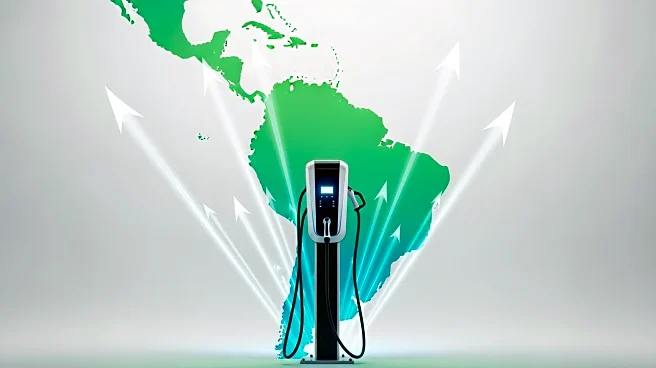What's Happening?
The Latin American electric vehicle (EV) market has reached a 6% market share in the third quarter of 2025, driven by a 55% year-over-year growth. The market is balanced between battery electric vehicles
(BEVs) and plug-in hybrid electric vehicles (PHEVs), with Brazil and Mexico leading in overall sales. Smaller countries like Uruguay and Costa Rica have high market shares, while Argentina lags behind with less than 1000 quarterly sales. The region's growth is attributed to increasing competitiveness of EVs and favorable market conditions, despite the lack of significant public subsidies.
Why It's Important?
The growth in EV sales in Latin America signifies a shift towards sustainable transportation, which could have positive environmental impacts. As countries like Brazil and Mexico continue to lead in sales, they may influence regional policies and investments in EV infrastructure. The success of smaller countries like Uruguay and Costa Rica demonstrates the potential for societal support and environmental initiatives to drive EV adoption. This trend may encourage other countries to implement similar strategies, potentially accelerating the transition to cleaner transportation across the region.
What's Next?
As EVs become more competitive, market share in countries like Brazil and Colombia is expected to rise, especially if the overall market growth slows down. Mexico's strategy to develop affordable mass-market EVs could reshape its position in the regional market. The Latin American Zero-Emission Observatory (ZEMO) aims to further research charging infrastructure and public policy, potentially fostering regional cooperation and accelerating the transition to sustainable transportation.
Beyond the Headlines
The organic growth of the EV market in Latin America, largely without public subsidies, highlights the region's potential for sustainable development. This transition may serve as a model for other regions facing similar challenges, emphasizing the importance of societal support and environmental awareness in driving technological adoption.













